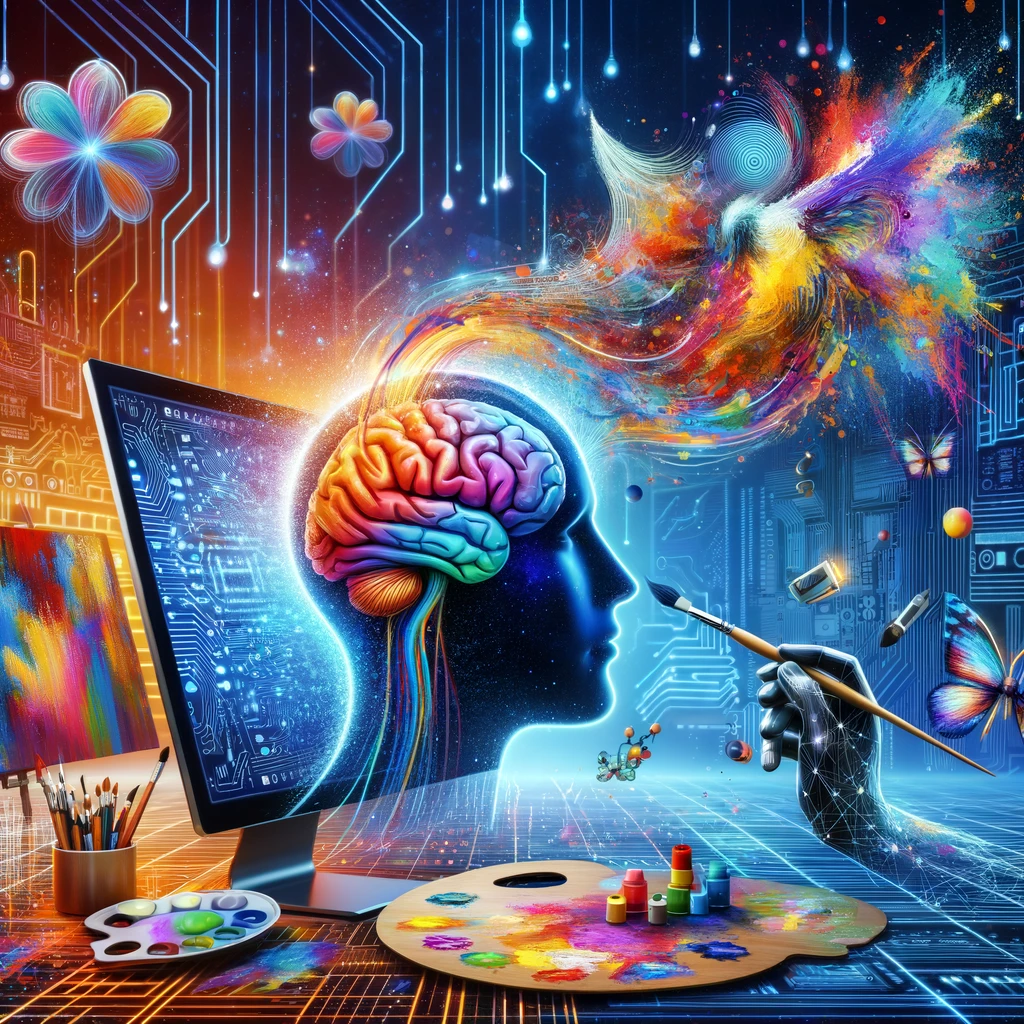In the realm of digital art and technology, the emergence of artificial intelligence (AI) has marked a revolutionary leap forward. The fusion of AI with artistic creativity has opened up unprecedented avenues for artists, designers, and even those without a traditional artistic background to transform their abstract ideas into tangible visual forms. This article delves into the transformative journey of taking a mere thought and converting it into a piece of art using AI technology, a process that demystifies the complexity of creation and democratizes art for a broader audience.
The Dawn of AI in Art
Artificial intelligence, once a figment of science fiction, has rapidly evolved into a cornerstone of modern digital artistry. AI in art encompasses a range of technologies that enable machines to understand, interpret, and create artworks in various forms. These technologies include machine learning, neural networks, and generative adversarial networks (GANs), which have been instrumental in the development of tools that can generate images, music, and even poetry.
Bridging Thoughts and Visuals
The core of transforming ideas into images lies in the ability of AI to interpret human input and translate it into visual output. This process begins with the user providing a prompt or description of their envisioned idea. Advanced algorithms then process this input, drawing from vast datasets of artistic works to generate images that align with the user’s description.
The Role of Text-to-Image Generators
Text-to-image generators have emerged as a powerful tool in this creative process. Platforms like DALL-E, Artbreeder, and DeepArt have popularized the use of AI for generating complex images from simple text prompts. These systems leverage deep learning models to understand the nuances of language and visual representation, allowing them to produce images that range from realistic to surreal, based on the specificity and creativity of the input prompt.
Customization and Control
One of the most appealing aspects of using AI in art creation is the level of customization and control it offers. Users can specify details such as style, color scheme, and composition in their prompts. Furthermore, many AI art generators provide tools for users to iteratively refine their outputs, enabling a collaborative process between human and machine that ensures the final product aligns closely with the original vision.
Ethical Considerations and Originality
As AI art technology advances, it raises important ethical considerations regarding originality, copyright, and the role of the artist. The use of AI to create art challenges traditional notions of authorship, as the artwork is produced by an algorithm. However, it also opens up a dialogue about the nature of creativity and the potential for AI to serve as a tool that extends human artistic capability rather than replacing it.
Ensuring Responsible Use
To navigate these ethical waters, it is crucial for creators to use AI art tools responsibly. This includes acknowledging the use of AI in the creative process, respecting copyright laws, and considering the implications of creating art that blurs the line between human and machine-generated content. Additionally, the development of AI art technologies should prioritize transparency and the ethical use of data.
SEO Implications for AI-Generated Art
The rise of AI-generated art also has significant implications for search engine optimization (SEO). As more artists and creators publish their AI-generated artworks online, understanding how to effectively optimize content for search engines becomes essential.
Keywords and Descriptions
For creators looking to showcase their AI-generated art, incorporating relevant keywords and detailed descriptions can enhance visibility on search engines. This includes using terms related to AI art, the specific technologies or platforms used, and the thematic elements of the artwork.
Visual Search and AI Art
With the advancement of visual search technologies, the ability of search engines to understand and index images has improved dramatically. This means that the visual characteristics of AI-generated art, such as style, color, and composition, can also impact its discoverability online. Optimizing images with descriptive file names, alt text, and surrounding content can further enhance their searchability.
Conclusion
The intersection of AI and art represents a fascinating evolution in the way we create and perceive art. By transforming abstract ideas into visual realities, AI art generators democratize the creative process, making art more accessible to a wider audience. However, as we navigate this new terrain, it is important to consider the ethical implications and ensure that the use of AI in art remains a collaborative, transparent, and responsible practice.
As the technology continues to evolve, the potential for AI to further enhance human creativity is boundless. From idea to art, the journey of transforming thoughts into images with AI is just beginning, promising a future where the boundaries of imagination are the only limits to what can be created.
In this transformative era, embracing AI in art not only opens up a world of creative possibilities but also challenges us to rethink the essence of art and creativity in the digital age. As we explore this exciting frontier, the synergy between human imagination and artificial intelligence will undoubtedly lead to the emergence of new artistic paradigms and experiences that were once thought impossible.
